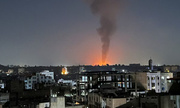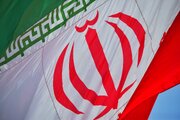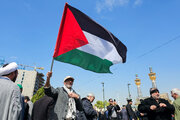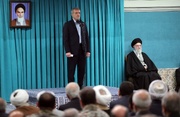Alireza Askari Chavardi told Mehr News local correspondent that the archeologists had been working to develop an insight into the functions of the ancient complex in Persepolis during past 100 years till now, and to present a spatial analysis of coherence and conceptual links in the meaning of polis in the royal construction and the surrounding buildings.
Chavardi pointed to the group’s excavations in Tale-Ajori; “one of the most important sections of the region immediately leading to Persepolis is the northwestern part of the royal seat which is also called Firouzi Complex, on where the studies conducted by archeological expeditions have been focused, is where now lies the relics of a famous monument called Tale-Ajori,” said the head of the group.
“Any comprehensive study of Tal, located 3km west of Persepolis, should include it in a broader framework informed by past research conducted in Parseh; as in past studies, we assume as well that the region in the vicinity of Firouzi garden had been part of a city relevant to royal seat in Persepolis,” he asserted. “The remains of Achaemenid ascendancy near Firouzi village has only gradually attracted interests of the archeologists who studied the areas surrounding the royal seat to locate the Royal Sacred Place in the broader limits of the city for nearly 100 years,” Chavardi said.
“The most important findings of this season of excavations are 30 pieces of glazed bricks adorned with images of winged animals, incorporating mythic beasts of Elamite and Achaemenid eras in the tradition not unlike traditions of Shusha and Mesopotamia in southwestern Iran,” he explained. “The outer parts and the great hall of the gate of this section of Parseh are decorated with colorfully glazed bricks, and thousands of pieces of bricks, each in 33 by 33 by 11 dimensions, have made the building; now however, the majestic building was turned to a pile of dust, hence called by local people as Tale-Ajori,” said the archeologist.
A joint Iranian-Italian expedition explored Tale-Ajori for nearly 50 days in October and November 2013. Persepolis was founded by Darius of Achaemenid in 521 BC, and was the dynasty’s seat up to the decline of the empire in 331 BC as their political and religious capital city.
The terrace where the royal houses have been built envisages an urban landscape for Achaemenid palaces with more than 100 ancient objects and great monumental works in the vicinity of the royal seat, buildings scattered in an area of 600 hectares around the Persepolis, with gardens interspersed among these buildings.
The expedition was led by Dr. Chavardi, of Shiraz University and Professor Pierre Francesco Caglieri, of Italian University of Bologna, and was financed by provincial office of Cultural Heritage Organization.
The season provided a reconstruction of the geomorphologic landscape of Persepolis and Parseh; 10 hectares of the areas near Tale-Ajori were documented through geo-electrical and geophysical instruments.
SH
MNA
END
























Your Comment